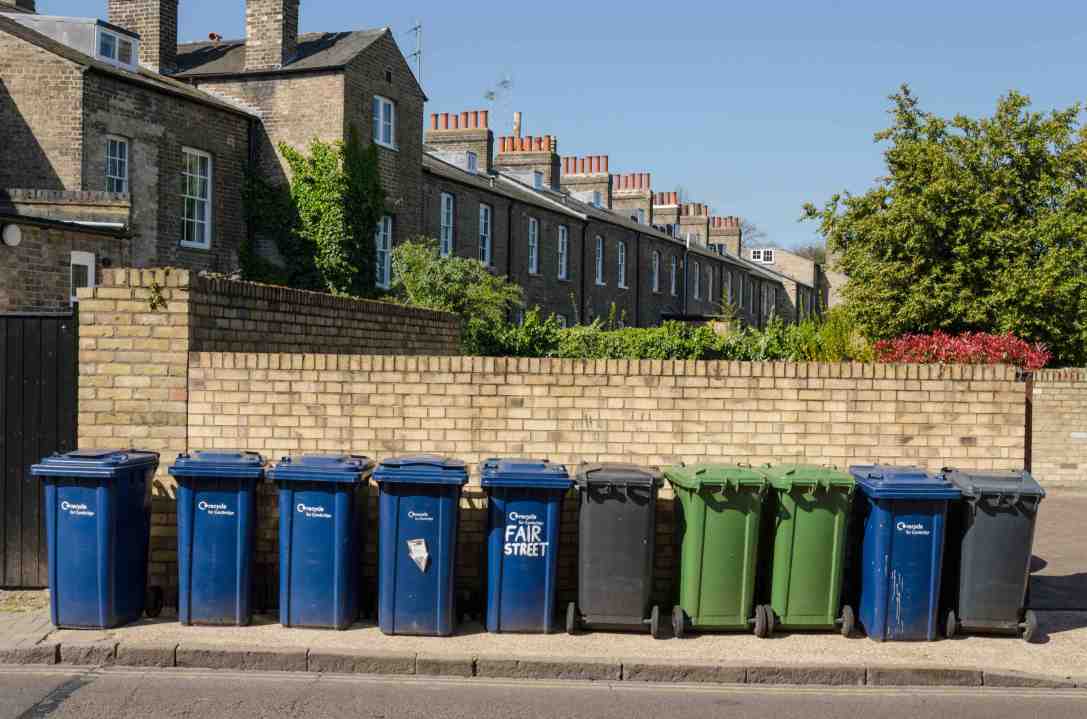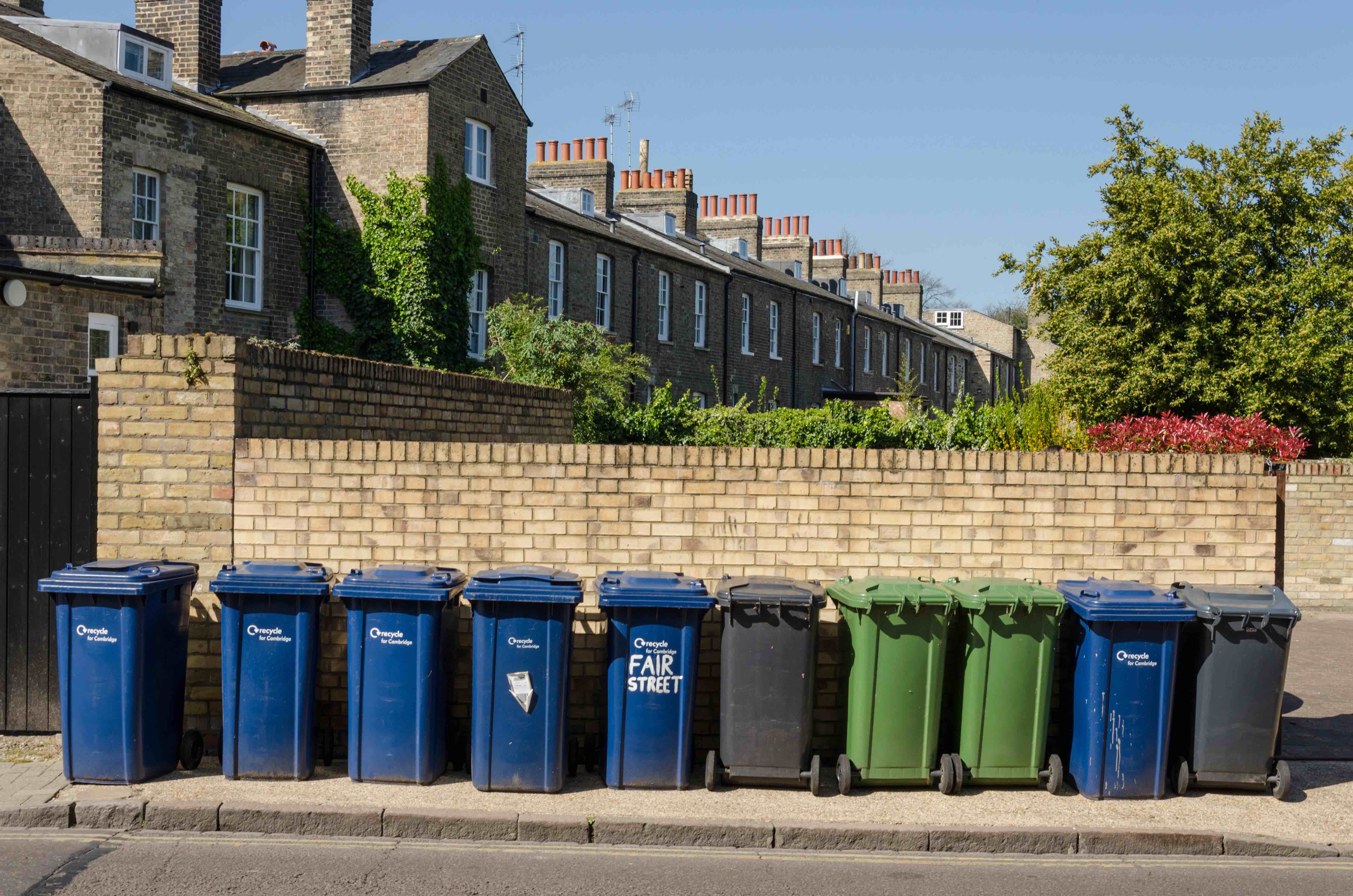Once I thought nothing could make residential Britain look uglier than pebble-dashing, PVC windows and satellite dishes. I was wrong. As if the country had not been brutally homogenised enough by the fact that every high street has the same shops, now every residential road is reduced to being an identical backdrop for a very persistent invader: the wheelie bin.
Lined up like Daleks, they are breeding in my North London neighbourhood, blocking front gardens and pavements. Outside houses split into flats, where each has its own set, there are actual crowds of these 4.5ft graceless plastic buckets, which come in multiple colours for different sorts of rubbish.
When wheelie bins first started infiltrating our streets just over a decade ago, we valiantly tried to fight back. English Heritage called them ‘an abomination that blighted our streets’, and there was a ‘Not in my front yard’ campaign.
So what happened? After a brief skirmish, total surrender. Today there are millions of wheelie bins spilling across roads the length and breadth of the nation. The convenience was too strong a pull for local councils, who love them because they only have to pick up the refuse every fortnight and they can fine us for using them ‘incorrectly’ – whether that’s putting them out too early, using the wrong colour or not shutting them properly. As long as they rake in cash, councils couldn’t seem to care less if they compromise the appearance and individuality of their own communities.
Lined up like Daleks, they are breeding in my North London neighbourhood, crowds of 4.5ft graceless plastic buckets blocking front gardens and pavements
Criminals are rather keen on them, too: burglars find them handy for scaling fences and climbing into windows, and arsonists and thugs treasure them because they can set light to them.
And so they keep breeding, even obscuring our most loved landmarks. Recently I visited the Old Palace at Hatfield House, where Elizabeth I spent most of her childhood. It is renowned as a masterpiece of patterned Tudor chimneys and latticed windows, and is one of the foremost examples of medieval brickwork in the country. But my journey back through time was abruptly interrupted by the sight of a large green wheelie bin in the beautifully preserved courtyard next to it.
So what do we Britons do when such an annoyance is foisted up on us? We learn to put up with it and resort to humour. There are stickers we can buy to give our ugly wheelie bins manic grins. Some people paint theirs or buy decorative covers. There are also wheelie bin Twitter accounts, anthropomorphising them to look like they are having sex or having deep conversations about politics. (In case it’s useful, a group of wheelie bins is called ‘a cackle’.) In heatwaves, enterprising sorts fill them up with iced water and call them ‘plunge pools’.
Online, you will find a list of wheelie bin etiquette rules, which include never putting anything in your neighbour’s bin. Breaches of this have apparently led to growing numbers of neighbourhood punch-ups. Street placement is also a delicate art. Your wheelie bin must be positioned in the very precise sweet spot between the edge of your property boundary and a place where it can be seen from the road by refuse collectors.
Of course, while I complain about wanting our streets and landmarks to retain some charm, all of this is really about something more serious: Britain’s raging rubbish habit. Wheelie bins are made so big to vacuum up all the garbage we produce which would otherwise be strewn around the streets in plastic bin bags (and strewn around further by foxes who rip those bags open).
As a nation, we still carelessly use plastic bottles and plastic packaging like there’s no tomorrow (at the rate we’re going, there won’t be). Manufacturers are still not doing enough to reduce waste and only a fraction of supermarkets offer refilling stations.
According to the latest government statistics, in 2020 the total waste from UK households was 22.6 million tonnes, up from 22.1 million tonnes in 2019. That’s around 399kg per person, or about a third of a ton of garbage each.
The problem is that it’s human nature to fill up the time and space available to us – a concept known as ‘Parkinson’s law’ after the professor who recognised it. Examples of this principle include ‘The more money you earn, the more you spend’ – or in this case ‘The bigger your wheelie bin, the more you fill it up’.
It seems, however, that I am one of the lucky ones. I’m still able to enjoy the view of my house (which is smarter-looking than I am) from the street, as it’s one of the few not yet concealed by several giant wheelie bins queuing up in front of it. When I rang my council to find out how long I had left before they’d be foisted on me, a nice man in the refuse department told me I have ‘bin privilege’ – meaning that if I don’t want to have one, I won’t be forced. The local authority has at least recognised that the beauty of the tall elegant Georgian houses in my borough would be blotted out if they made them mandatory for all, so miraculously, my refuse collectors are still happy to empty my old-school steel bins.
For now, at least, I have escaped the march of the wheelie bin. But I know many others who aren’t so fortunate. And before these monsters swallow up Britain’s streets even more, my hope is that we can find ways to starve them into extinction – and get our homes and pavements back.







Comments